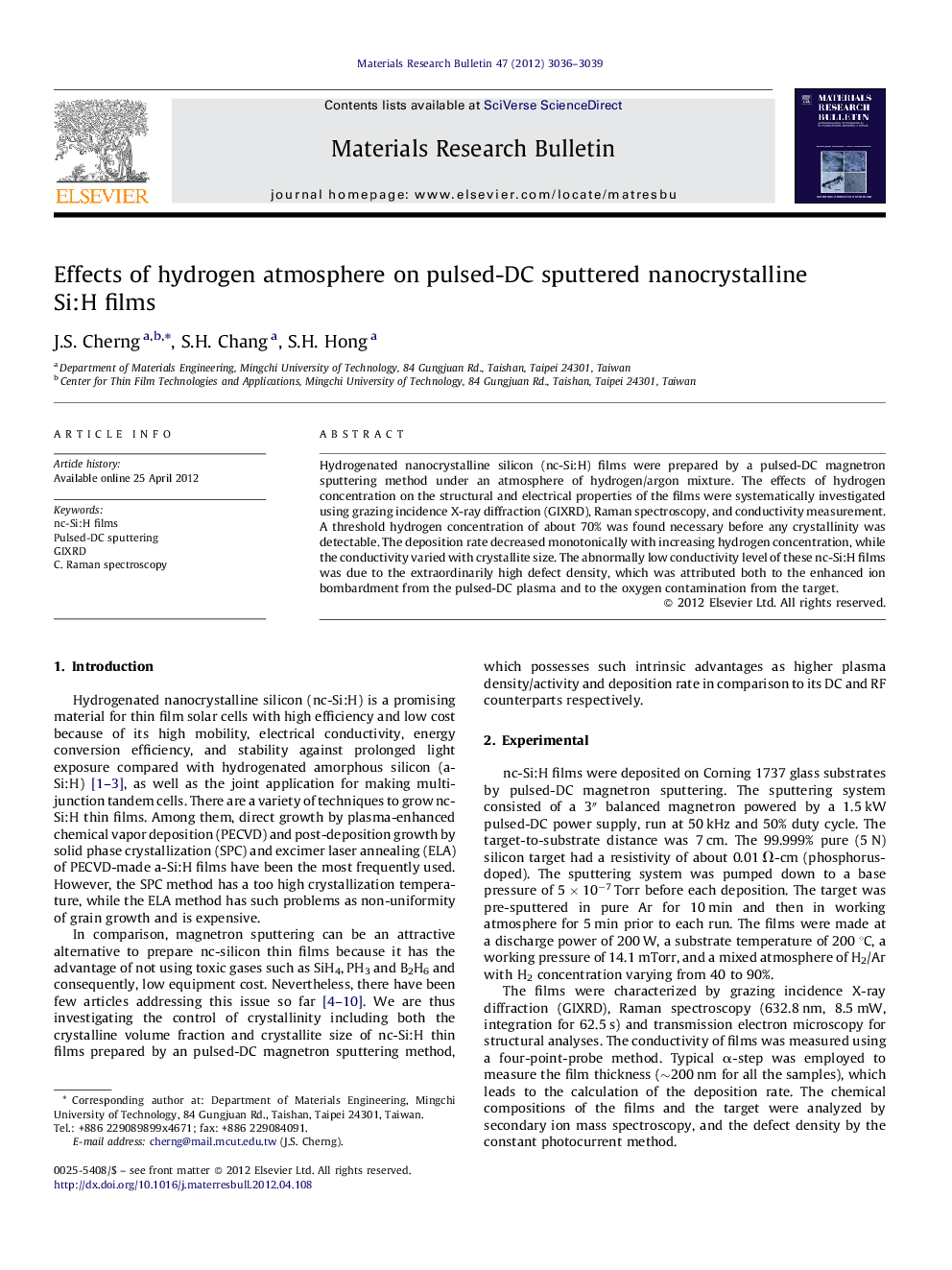| Article ID | Journal | Published Year | Pages | File Type |
|---|---|---|---|---|
| 1489711 | Materials Research Bulletin | 2012 | 4 Pages |
Hydrogenated nanocrystalline silicon (nc-Si:H) films were prepared by a pulsed-DC magnetron sputtering method under an atmosphere of hydrogen/argon mixture. The effects of hydrogen concentration on the structural and electrical properties of the films were systematically investigated using grazing incidence X-ray diffraction (GIXRD), Raman spectroscopy, and conductivity measurement. A threshold hydrogen concentration of about 70% was found necessary before any crystallinity was detectable. The deposition rate decreased monotonically with increasing hydrogen concentration, while the conductivity varied with crystallite size. The abnormally low conductivity level of these nc-Si:H films was due to the extraordinarily high defect density, which was attributed both to the enhanced ion bombardment from the pulsed-DC plasma and to the oxygen contamination from the target.
► Nanocrystalline silicon films were made by pulsed-DC magnetron sputtering. ► A threshold hydrogen concentration was required. ► High defect density due to ion bombardment and oxygen contamination caused low conductivity.
